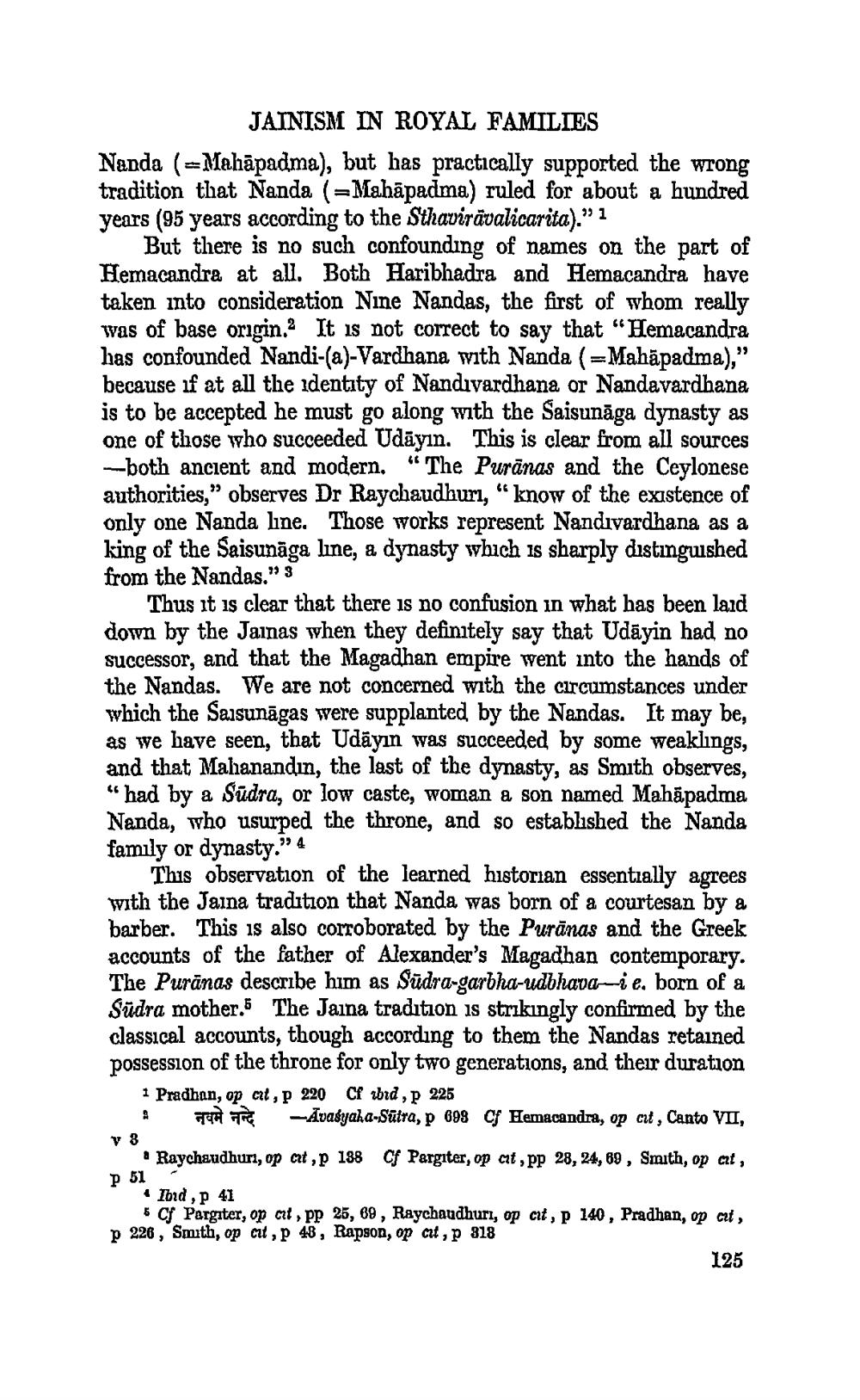________________ JAINISM IN ROYAL FAMILIES Nanda (Mahapadma), but has practically supported the wrong tradition that Nanda (Mahapadma) ruled for about a hundred years (95 years according to the Sthaviravalicarita)." 1 But there is no such confounding of names on the part of Hemacandra at all. Both Haribhadra and Hemacandra have taken into consideration Nine Nandas, the first of whom really was of base origin. It is not correct to say that "Hemacandra has confounded Nandi-(a)-Vardhana with Nanda (=Mahapadma)," because if at all the identity of Nandivardhana or Nandavardhana is to be accepted he must go along with the Saisunaga dynasty as one of those who succeeded Udayin. This is clear from all sources -both ancient and modern. "The Puranas and the Ceylonese authorities," observes Dr Raychaudhuri, "know of the existence of only one Nanda line. Those works represent Nandivardhana as a king of the Saisunaga line, a dynasty which is sharply distinguished from the Nandas." 3 Thus it is clear that there is no confusion in what has been laid down by the Jainas when they definitely say that Udayin had no successor, and that the Magadhan empire went into the hands of the Nandas. We are not concerned with the circumstances under which the Sasunagas were supplanted by the Nandas. It may be, as we have seen, that Udayin was succeeded by some weaklings, and that Malianandin, the last of the dynasty, as Smith observes, "had by a Sudra, or low caste, woman a son named Mahapadma Nanda, who usurped the throne, and so established the Nanda family or dynasty." 4 This observation of the learned historian essentially agrees with the Jaina tradition that Nanda was born of a courtesan by a barber. This is also corroborated by the Puranas and the Greek accounts of the father of Alexander's Magadhan contemporary. The Puranas describe him as Sudra-garbha-udbhava-i e. born of a Sudra mother. The Jaina tradition is strikingly confirmed by the classical accounts, though according to them the Nandas retained possession of the throne for only two generations, and their duration 1 Pradhan, op art, p 220 Cf zoid,p 225 HT -Avasyaha-Sutra, p 698 Cf Hemacandra, op cit, Canto VII, Y 8 Raychaudhurt, op cut, P 188 Of Pargiter, op at, pp 28, 24, 60, Smith, op at, p 51 Jord, p 41 6C Pargiter, op at, pp 25, 69, Raychaudhuri, op cit, p 140, Pradhan, op cit, p 226, Smith, op cut, p 48, Rapson, op cut, p 818 125




